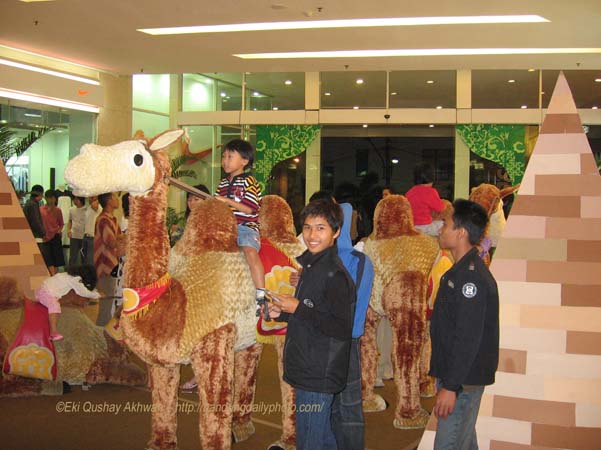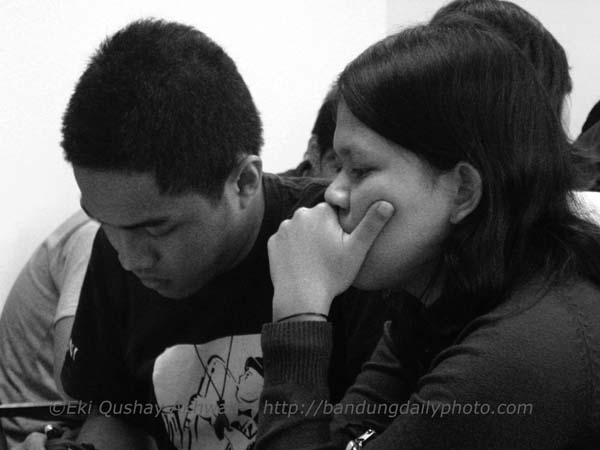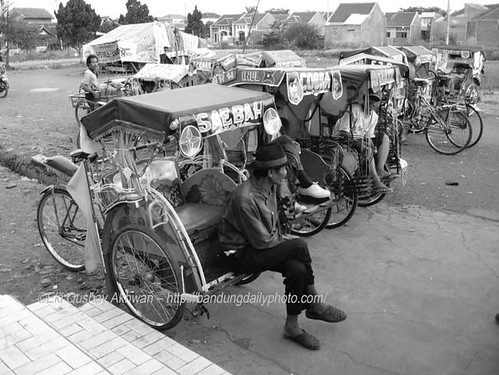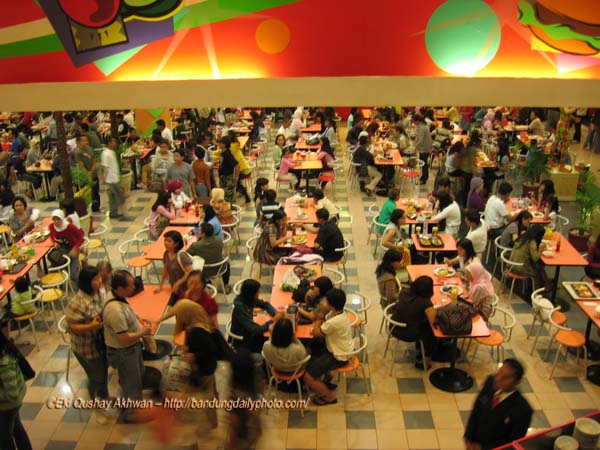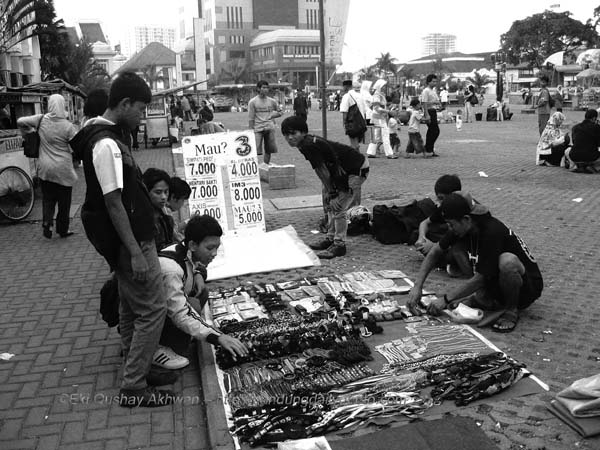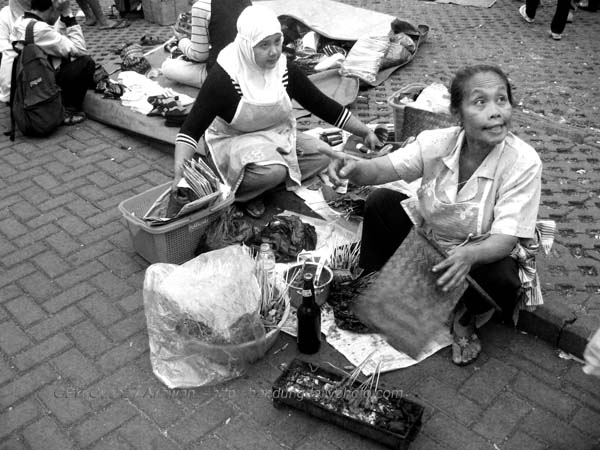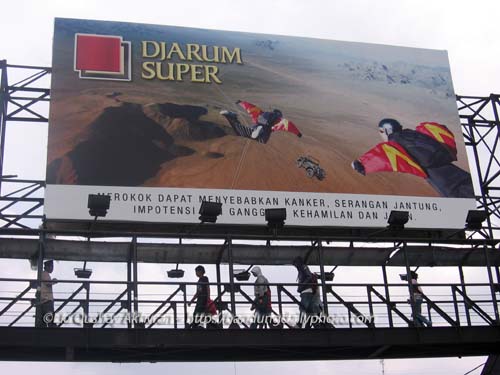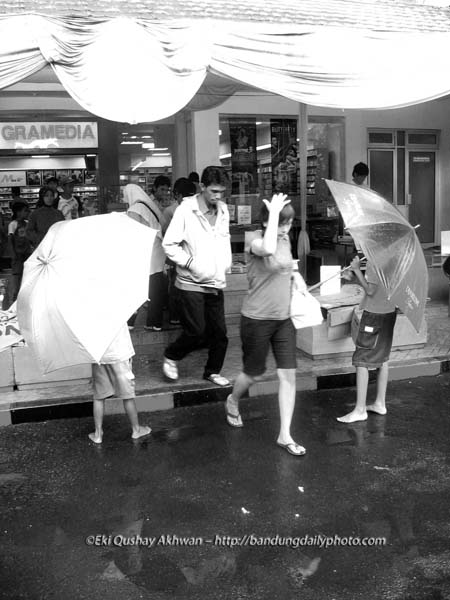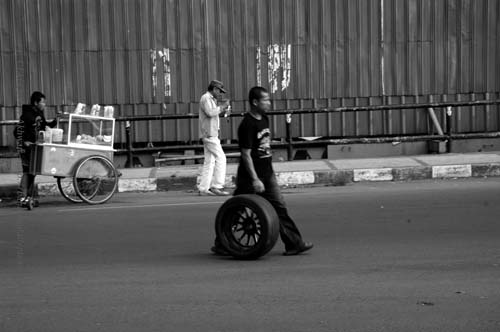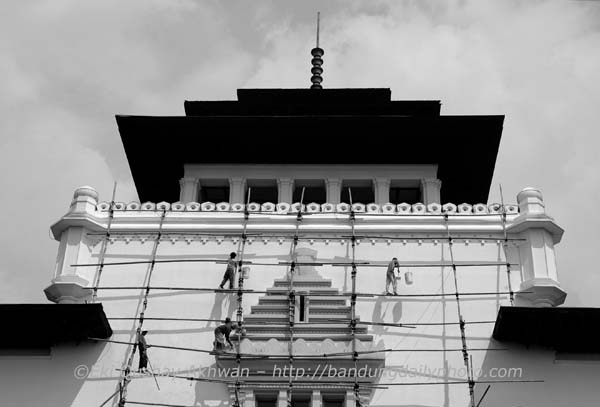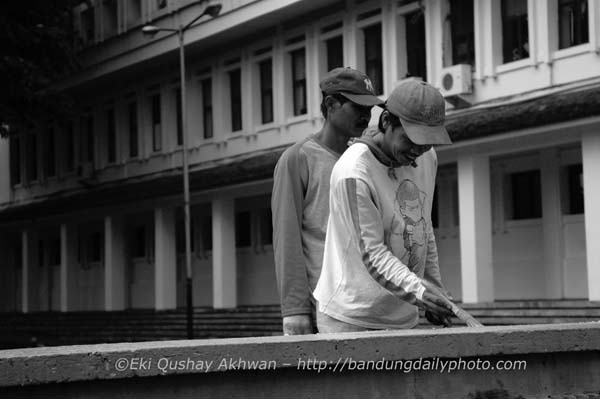I am afraid today's photos are not of good quality (the first one is obviously a bit shaky), but I have to keep and and post them here for the sake of reporting.
As I said yesterday, Moslems are going to celebrate Idul Firti soon. And like at Christmas or any other religious holidays, such an occasion usually means shopping.
Unlike in the Middle East or any other Moslem or Moslem-dominated countries, Idul Fitri in Indonesia and southeast Asian countries like Malaysia, Brunei Darussalam, and Singapore in general are considered to be a bigger and more festive holiday than Idul Adha (the other major Moslem holiday, which is considered a bigger holiday in the Middle East).
There are a lot of fascinating traditions in this area to celebrate Idul Fitri. One of these traditions is extended-family gathering. Kins from near and far would travel long distances just to get together at this time of the year. This tradition is called "mudik" or "pulang kampung" in Indonesia ("balik kampong" in Malaysia), which means more or less "returning home". It is customary for those who live in the cities to go back to the villages or smaller towns where they come from with "oleh-oleh" (gifts) for their extended families and kins. Families and friends would ask forgiveness for any intentional or unintentional trespasses and offeses they might have committed in the past year, and ties of "silaturahim" (compassion) are restored and strenghtened again.
It is also customary for them to dress their best (which usually means new clothes for everyone) and serve the most special foods for the occasion. With all these traditions, it is no wonder that shopping is an important part of the tradition. Shops will be packed with shoppers and shops and businesses, on the other hand, will offer great discounts to attract more customers. (This may sound familiar to those of you who celebrate Christmas. Yes, they are similar as far as the festive mood and shopping frenzy go.)
The shopping and traveling "frenzy" of course put a lot of constraints in logistics. Prices of some basic commodities (and inflation) would usually go up (if only slightly) as businesses are going briskier, roads are packed with travellers/holiday-makers as are trains, commercial flights, and ships.
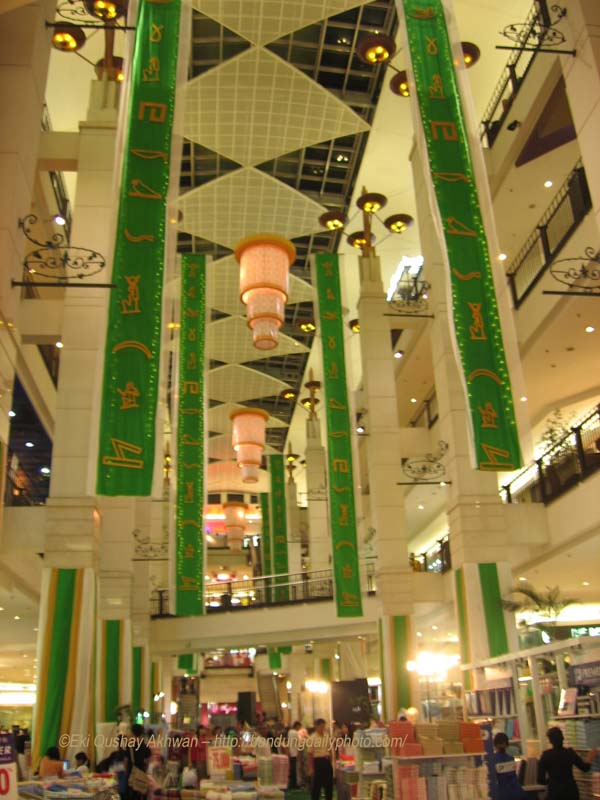
I took today's photographs at Istana Plaza Shopping Mall, Bandung, a couple of days ago. The top photo is of things offered for sale at the hall of this mall. The bottom photo is of a large camel dolls (?) near the entrance. Somehow, camel - being an animal of the Middle East - is considered as a mascot for the holiday in this mall. Kids love them and, as you can see in the photo, would want a ride on them.
